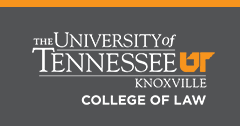Abstract
This address will focus on the 2009 report ("the Report") of the National Academy of Science Research Council ("NRC"), which was commissioned by Congress to look at evolving trends in forensic science. Understanding what is happening in the forensic sciences is very complicated because of the wide variations that exist in different jurisdictions. There are federal laboratories, state or regional laboratories, county laboratories, and municipal laboratories. Almost all public crime laboratories examine controlled substances, and many examine firearms and tool marks. A majority of laboratories also screen biological samples, usually in preparation for DNA analysis, and examine forms of trace evidence. Many forensic examiners do not work in a traditional laboratory, however. They work within law enforcement offices and primarily conduct crime scene investigations, especially fingerprint examinations and bloodstain pattern analyses, and sometimes perform other forensic functions.
Recommended Citation
Berger, Margaret A.
(2014)
"Evolving Trends in Forensic Science,"
Tennessee Journal of Law and Policy: Vol. 6
:
Iss.
2
, Article 3.
Available at:
https://trace.tennessee.edu/tjlp/vol6/iss2/3
